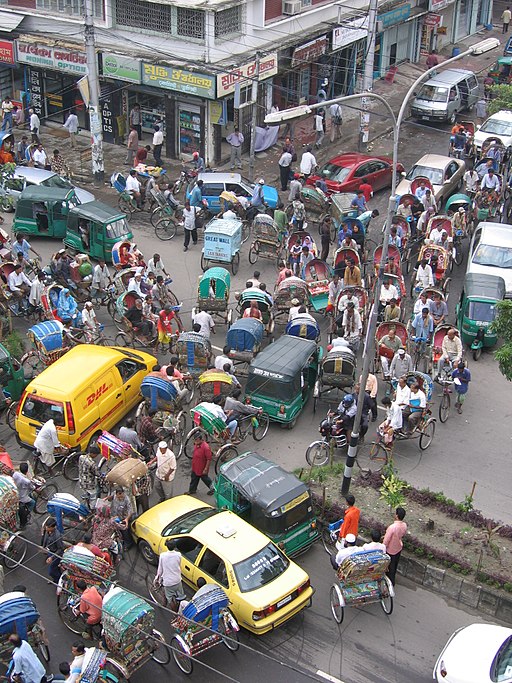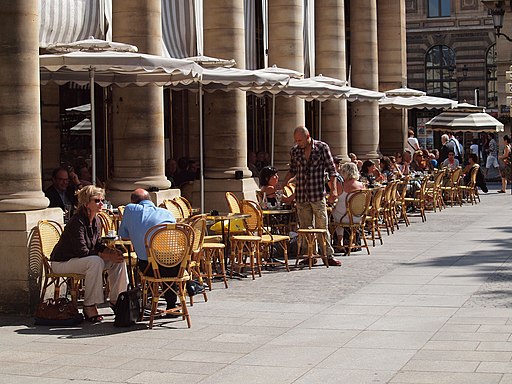A Placemaking Journal
The Human Scale
 This weekend, I again watched The Human Scale, a film from 2013, and got more stoked to meet Jan Gehl at the 23rd Congress for the New Urbanism (#CNU23) in Dallas in April. Jan will bring the Congress an update on his human scale work since the film was complete, but the ideas are timeless. The film is on Netflix in Canada. I’m not sure if it’s also available in the U.S., but it will be screened in Texas before CNU 23. Until then, here are memorable statements from the film, and the Twitter accounts of the speaker, when I could find them.
This weekend, I again watched The Human Scale, a film from 2013, and got more stoked to meet Jan Gehl at the 23rd Congress for the New Urbanism (#CNU23) in Dallas in April. Jan will bring the Congress an update on his human scale work since the film was complete, but the ideas are timeless. The film is on Netflix in Canada. I’m not sure if it’s also available in the U.S., but it will be screened in Texas before CNU 23. Until then, here are memorable statements from the film, and the Twitter accounts of the speaker, when I could find them.
We have known this about the motorcar: if you make more roads, you will have more traffic. Now we know about cities: if you make more places for people, you will have more public life. In cities that have done away with their pubic spaces, life has become totally privatized. ~Jan Gehl @citiesforpeople
If you are a Robert Moses-type planner, you want to separate things, and extinguish the possibility for life to pop up. A concrete system in equilibrium (the Moses legacy of things moving quickly) is not what makes the city fantastic. Before the recent prioritization of pedestrians and cyclists, the image of New York City was of a throng of taxis in Times Square. The brand wasn’t the pedestrian experience. ~Jeff Risom @risomj
We have made the human living environment deadly. And people see that you can’t build your way out of traffic. ~Mark Gorton @MarkGortonNYC
New York City streets used to be 90% used by pedestrians and 10% by drivers, but the space allocation was just the opposite. We redid the math. ~Janette Sadik-Khan @JSadikKhan
New York City is changing North America’s perception of what the city street is all about. ~Paul Steely White @PSteely
When you walk through a city a five kilometers per hour, it’s a very sensual and interesting experience. So we design cities for people at the scale of 5 km/h. Suburbs are made so that cars are happy going 60 km/h. That’s a completely different scale from walking. We are building for ourselves problems of obesity, social isolation and financial hardship with the patterns of our car suburbs. ~Jan Gehl @citiesforpeople
We’re going to have to almost double our global urban capacity in the next 40 years. Global urban population was 3.5 billion in 2012 and by 2050 is expected to be 6.5 billion. We don’t have the capacity to keep building like we’ve been building, so we must figure out how to do more with less. ~City of Melbourne’s Lord Mayor Robert Doyle @LordMayorMelb
Dhaka is the fastest growing city on earth, with 1,000 new residents per day. The patterns of growth are destroying the flavor of the city. Ignoring lower income people and prioritizing for the rich becomes a callous of your own making as a city planner. ~Iqbal Habib, Architect, Urbanisation and Governance Committee
In Dhaka, 5% of people use private cars, and 37% use the ricksha. But conversations are underway to try to ban the ricksha, increasing auto congestion, and marginalizing lower income individuals. The budget for pedestrians is $10 million USD, while the budget for flyover overpasses is $1 billion. We want to be free of the negative forces of economic colonialism – car-centric development – in Bangladesh. ~Ruhan Shama 
Image credit: flickr user: Pyb
The things that we want when we think as people – instead of as corporations – are actually very, very common. ~Bob Parker Mayor of Chistchurch, New Zealand @bobparkerchch
Cities are full of overlapping memories; overlapping stories. The city is not just bricks and mortar. It’s about love. Of the people for their place. It’s not possible for the master plan to answer all the questions, but we can create a robust framework that allows life to take place. Invitations to walk. To sit. To stay. A better way to cross the street. A better way to live your life. ~David Sim on Christchurch earthquake
City life comes when you give people a chance to not plan everything. To just come and dance. ~Coralie Winn @GapFillerChch
It is so cheap to be sweet to people in city planning. Man is a very clever animal who knows what he likes, and when he is uncomfortable. ~Jan Gehl @citiesforpeople

Image credit: flickr user: zoetnet
If you’re looking for tools to implement many of the ideas in The Human Scale film, definitely join us at CNU Dallas, and in particular check out these four sessions, with more details soon:
Form-Based Code Workshop
CNU 202 day-long workshop with Susan Henderson, Matthew Lambert, Jennifer Hurley, Marina Khoury, and Hazel Borys
Dallas, TX | Apr 29
From Ideas to Action: What’s the Story?
CNU 202 half-day workshop with Ben Brown and Scott Doyon
Dallas, TX | Apr 29
Designing at the Human Scale
CNU plenary with Jan Gehl
Dallas, TX | Apr 30
Happy City Applied
CNU 202 day-long workshop with Charles Montgomery and Hazel Borys
Dallas, TX | May 2
See you there!
If PlaceShakers is our soapbox, our Facebook page is where we step down, grab a drink and enjoy a little conversation. Looking for a heads-up on the latest community-building news and perspective from around the web? Click through and “Like” us and we’ll keep you in the loop.



